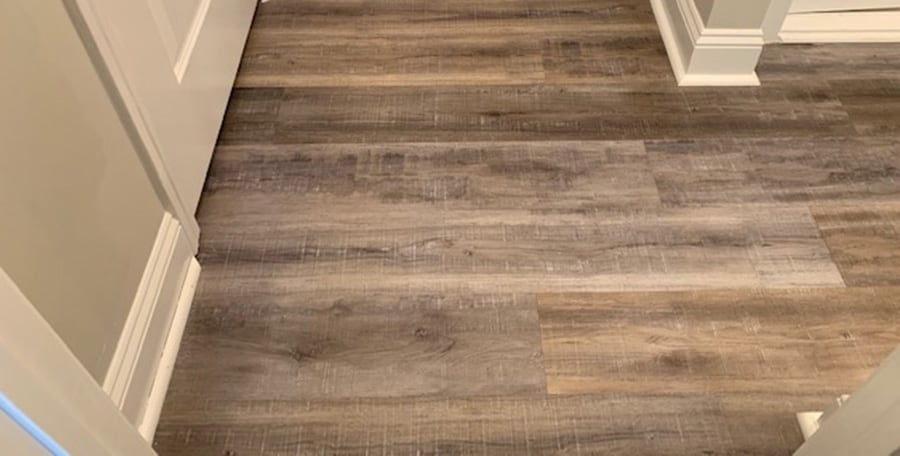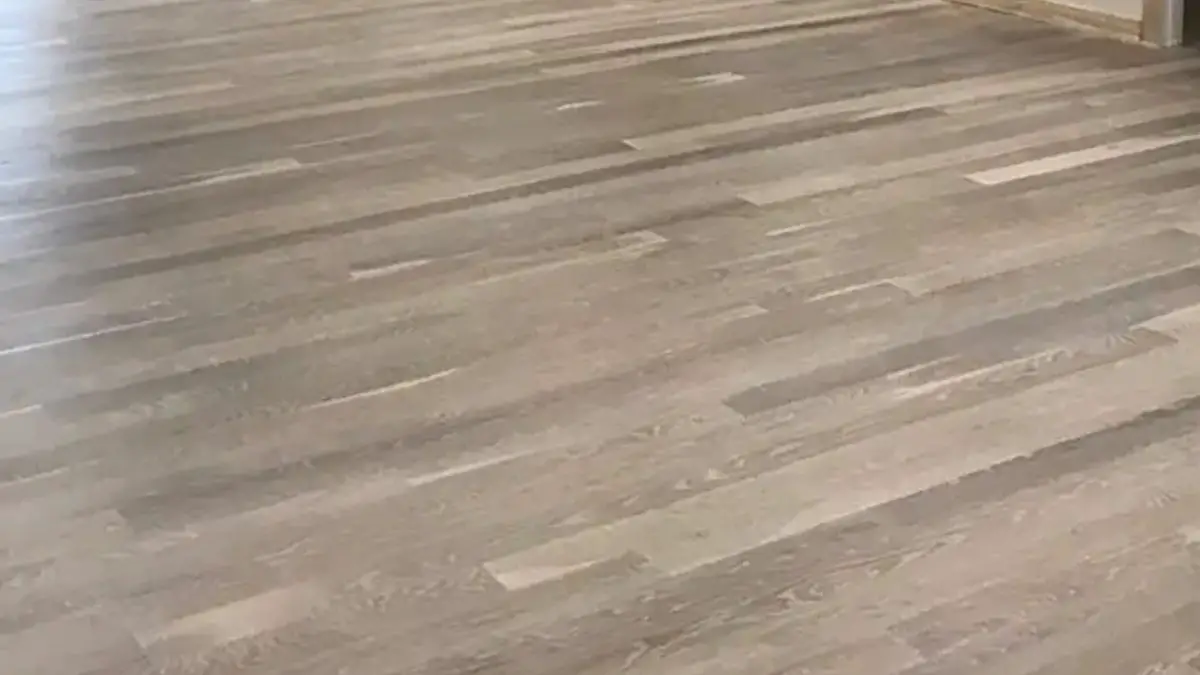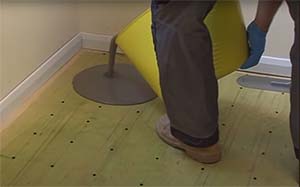
It is a known fact that wood floors have been around for hundreds of years. Hardwood was introduced in the 1600s, so it has come a long way since then. Another trendy flooring is LVT floors, more specifically known as luxury vinyl tile.
If you have ever felt smooth wood texture, you know the feeling is thrilling, significantly if you have ever cut a piece of your own with an electric saw. Since wood flooring is not rigid, like with branches or trunks on the trees, then you may be wondering if LVT may feel like wood.
Due to the technology we have today, LVT (luxury vinyl tile) looks like real wood but does lack the feel and stability of wood. The main difference is that vinyl flooring will not scratch easily and provides a better sense of smoothness that hardwood floors may not have over time due to regular wear and tear.
Keeping that in mind, there are some specifications we should go over more in-depth on the subject. More specifically, what diverse textures there are to vinyl flooring, the differences between LVT and hardwood floors, and why you should go with one rather than the other. These are all important factors when deciding what you want in a home.
What Does LVT Flooring Feel Like Specifically?
Well, this question has a few different answers. Firstly you have a few options when it comes down to the base texture. You can go for a kind of LVT that simulates most of the grooves and feel of real wood flooring, or you can go for a more simplistic variant that has some texture just due to how it is made.
By and large, it’s almost indistinguishable from real wood flooring. That being said, LVP will offer a closer match to natural wood flooring due to its being plank shaped and having more thickness than LVT, which looks more like tile.
The Differences Between LVT and Wood Flooring
Going from top to bottom, one of the most significant differences to be noted between the two would be the considerable price gap. More often than not, LVT is almost three times cheaper than going with traditional wood flooring.
- LVT price range is anywhere between $2-5 per square foot. More than likely, you will be able to install these floors without any problems.
- Hardwood is averaged at $3-7 square feet, but if you were to get them professionally installed, the most common cost is $6-12 per square foot.
Not only this, but luxury vinyl tile has more practical use in most places. Safety and upkeep could be quite the concern for up and coming families in a new home, and LVT offers a softer and more manageable to clean surface than typical wood flooring.
Even being a gentler material, luxury vinyl tile’s ability to almost entirely mimic the look and feel of real hardwood flooring without the constant need to maintain it to keep it looking pristine gives it another leg up on the real deal. One final bonus for LVT would be the fact that since it is a synthetic material, it’s also moisture-proof, so spills and accidents won’t provide the same annoyance as hardwood will in the long run.
Lastly, hardwood floors have been known to last a lifetime, whereas luxury vinyl tile only lasts 10 to 20 years, depending on how well you take care of them.
Does LVT Increase Home Value?
The relatively cheap cost of LVT compared to its natural counterpart does allow it to technically increase home value, but this is primarily from a seller’s standpoint. An ideal situation to get the most out of LVT would be with a rental property, specifically in rooms with a lot of traffic like laundry rooms, kitchens, and bathrooms.
Another perk towards increasing a home’s value would be the multitude of design options available to cater to almost anyone’s tastes giving you a modern look and feel for a fraction of the regular price.
Types Of Vinyl Plank Floors
There are three core types of vinyl plank flooring, but they all have unique sub-categories that offer even more diversity ranging from thickness to a dense wear layer. The wear layer is how much protection you have on the surface from scratches and other abrasions, ranging from 6, 12, and 20 mils thick. The more mils put onto a plank, the more strength it has in normal wear and tears.
The three types are waterproof vinyl planks, rigid core vinyl planks, and luxury vinyl planks, and they all have something unique they bring to the table. Let’s go more in-depth on each one.
- Waterproof vinyl planks: These are made utilizing four separate layers with a waterproof core included in the mix that sets them out from the other variants. These types can be installed practically everywhere and are ideal for anywhere that may experience an excessive amount of moisture or accidents.
- Luxury vinyl planks: Are typically considered higher quality and much more durable than the other two types. They stand apart from being that to endure much more abuse from the busy family. Anything ranging from those pesky kids that won’t stop running in the house to that adorable pet that will not sit still, these planks are sure to stand the test of time with that won’t diminish in looks with said abuse.
- Rigid core vinyl planks: These planks somewhat combine the other two’s attributes with a unique twist. The final product is incredibly dense, firm, and nearly indestructible, utilizing a particular stone-plastic composite core. In fact, due to how tough it is, the most common location for this kind of flooring is in commercial areas and is certified to handle that kind of traffic. The strength from this extreme endurance comes from its ultra-dense core, which is capable of withstanding even the heaviest furniture and strains ranging from your refrigerator to an oven. This flooring can take some severe punishment and still come out shining.
Similar Questions
Why Is LVT So Popular?
One of the significant reasons LVT has become so popular over the last ten years would be due to the immense price difference and general versatility that it has to offer. Being cheaper in itself has its perks, but with how little effort it takes to maintain combined with fitting in with almost any lifestyle, it only stands that its popularity has skyrocketed over the years. The flavor options in the styles and textures also play a part in this equation, but most instances circulate how well it fits into a project’s budget and end costs.
Right in step with the consumer base LVT offers sound reduction as another perk to its long list of benefits, with studies showing elevated noise levels increasing employee’s stress throughout the day; it contributes to generally higher office morale!
Is LVT Flooring Good Flooring?
The price may have homeowners wondering if a luxury vinyl tile is suitable or just a waste of money. In truth, this boils down to where and how you intended to use it. The perks listed above have their own merits to consider, but what kind of project you are working on and who your targeted market is playing a massive part in this choice. Not only this, but choosing a good-quality vinyl flooring is a neat option to keep it remaining good.
If you were aiming to cut costs and keep a nice look, then LVT would be a solid choice, but if you were going for a cutting edge high end home, the LVT wouldn’t exactly be considered the premium choice.
For example, a busy family or office could appreciate all of the benefits it offers, but you wouldn’t exactly expect to see the luxury vinyl tile in a mansion. Because of this, you have to take some extra time to go over your options and make the choice that fits perfectly for what your result should be.
Does LVT Look Cheap?
Actually, no, although you would want to install it where it would make the most difference. Most LVT types can have almost an indistinguishable level of detail, ranging from the texture to the surface’s look, matching its natural counterparts. This process is done using photogenic images of the desired mineral and a specialized high definition print decor film, using register and bevel technology.
Most suppliers aim at making a “better than reality” caliber of product using this method, with the only measurable stopping point being the quality of the photo they are using to display the print. As such, the result is a product that is indiscernible to all but the most trained eyes.
Conclusion
Luxury vinyl tiles’ ability to simulate real wood is almost flawless, assuming you are going for the kind of product specializing in this mimicking. While the floor practically always shares some high endurance waterproofing level, scratch resistance, and texture masking, there are considerable differences. Make sure you take some extra time and pick the more suitable kind for your lifestyle.
With so many types of choices available to you, it is truly a buyers market, and the world is your oyster in terms of what your result should be. As a side note, LVTs advancements, like all things, are a work in progress and are only going to get better with time. Simulating real wood will only get better as we understand how to manipulate technology to our advantage and create more stunning visuals to match our growing and unique needs.







